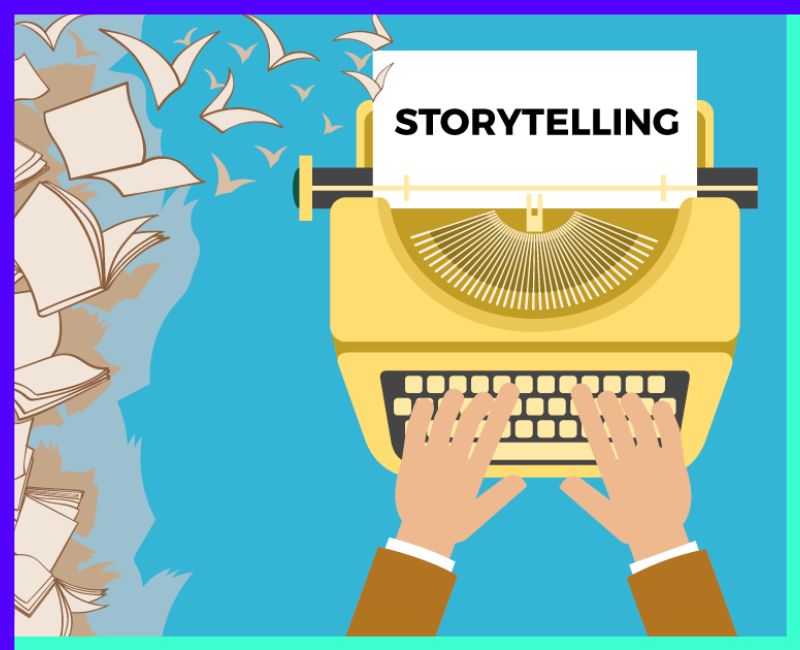Emotional storytelling emerges as a powerful tool to build brand trust and connect deeply with audiences. This strategy goes beyond mere advertising; it involves crafting narratives that resonate on a personal level, encouraging consumers to form emotional attachments with brands. This article explores the efficacy of emotional storytelling in marketing, providing insights into how brands can harness this approach to foster loyalty and trust.
What is Emotional Storytelling?
Emotional storytelling refers to a narrative technique that focuses on building an emotional connection with the audience. It leverages human feelings, experiences, and psychological triggers to engage the audience, making the story more memorable and impactful. This type of storytelling taps into a range of emotions to deliver messages in a more compelling and relatable manner.
Four Types of Storytelling
- Linear Storytelling: This is the most traditional form, where the story unfolds in a chronological order from beginning to end. It’s straightforward and follows a clear path through the narrative.
- Non-linear Storytelling: This type breaks away from chronological sequence to involve flashbacks, time skips, or other out-of-order narrative techniques. It can create a complex and engaging narrative that keeps the audience guessing.
- Interactive Storytelling: Often used in digital media, this type allows the audience to interact with the narrative and influence the outcome. It’s common in video games and online platforms where user choices dictate how the story progresses.
- Transmedia Storytelling: This method tells a single story or story experience across multiple platforms and formats using current digital technologies. It’s designed to create a unified and coordinated entertainment experience, with each medium making its own unique contribution to the storyline.
The Essence of Emotional Storytelling
Emotional storytelling in marketing involves using narrative techniques that evoke feelings to communicate brand values and the benefits of products or services. This method is based on the understanding that consumers are not just rational decision-makers but also emotional beings influenced by stories that resonate with their personal experiences and aspirations.
Why is Emotional Storytelling Effective?
Emotional storytelling is effective because it:
- Enhances Memory Retention: Emotional experiences are easier to remember. A story that makes an emotional impact is more likely to be remembered and recalled by the audience.
- Builds Connection: Stories that evoke emotions can create a deeper bond between the brand and the audience. This connection often translates into enhanced brand loyalty and trust.
- Drives Engagement: Emotional content is more likely to be shared. It resonates on a personal level, encouraging viewers to share the story with others, which increases engagement rates.
- Influences Decisions: Emotions play a significant role in decision-making. An emotionally charged story can persuade and motivate action more effectively than facts alone.
Emotional storytelling taps into the universal human experience, making it a powerful tool for communicators and marketers to broaden their impact and reach.
Strategies for Effective Emotional Storytelling
- Understand Your Audience: Knowing the audience’s values, needs, and emotional triggers is crucial. This knowledge allows brands to craft stories that are tailored to the audience’s expectations and emotional landscape.
- Authenticity is Key: Authentic stories that reflect genuine experiences and values resonate more deeply with audiences. Consumers can detect inauthenticity, which can backfire and lead to distrust.
- Incorporate Universal Themes: Stories that involve universal themes—such as love, triumph, or resilience—can appeal to a broader audience. These themes are relatable and can help convey brand messages in a universally appealing way.
- Visual Storytelling: Leveraging visuals can enhance emotional impact. Using images, videos, and other multimedia elements can help to illustrate stories, making them more engaging and memorable.
Case Studies of Emotional Storytelling in Marketing
- Dove’s Real Beauty Campaign: Dove uses emotional storytelling to challenge beauty stereotypes and inspire confidence among women. By sharing real stories of real women, Dove strengthens its brand as supportive and relatable.
- Nike’s “Just Do It” Campaigns: Nike’s advertisements often feature stories of perseverance and achievement. By aligning the brand with the emotional highs of sporting success, Nike motivates consumers to associate their products with personal triumph.
- Apple’s “Shot on iPhone” Campaign: Apple showcases user-generated content to tell powerful stories captured with iPhones. This strategy not only displays the product’s capabilities but also creates emotional bonds by featuring personal moments of users.
Challenges and Considerations
While emotional storytelling is powerful, it comes with challenges that need careful consideration:
- Balancing Emotions and Facts: While emotions are central, providing factual information about the products is also crucial to avoid misleading consumers.
- Cultural Sensitivity: When crafting stories, it’s important to consider cultural sensitivities to avoid alienating or offending parts of the audience.
Emotional storytelling is an effective marketing strategy that builds brand trust and deepens consumer engagement. By understanding their audience, being authentic, and using visuals effectively, brands can create compelling narratives that not only tell a story but also foster an emotional connection with consumers.
